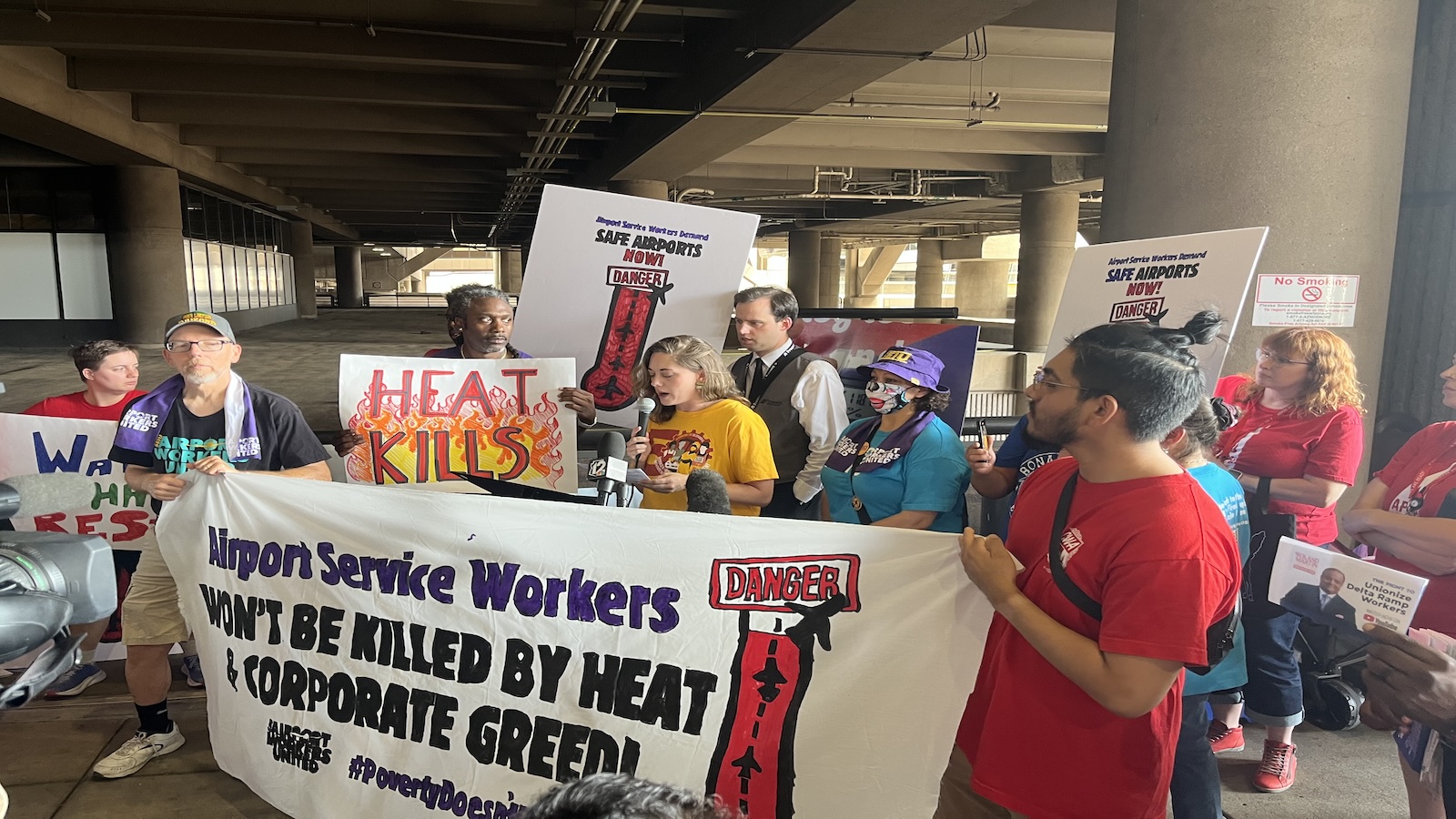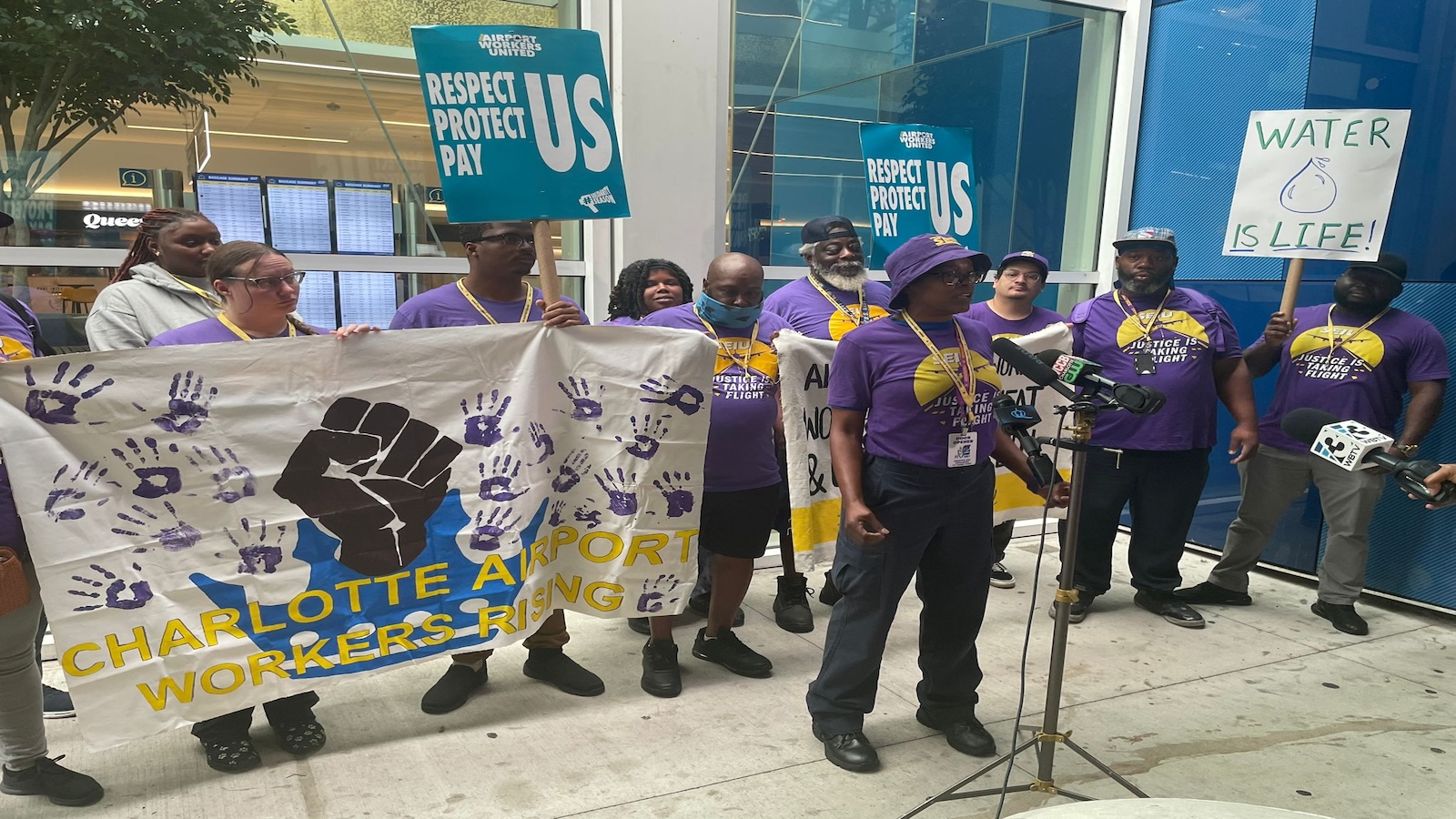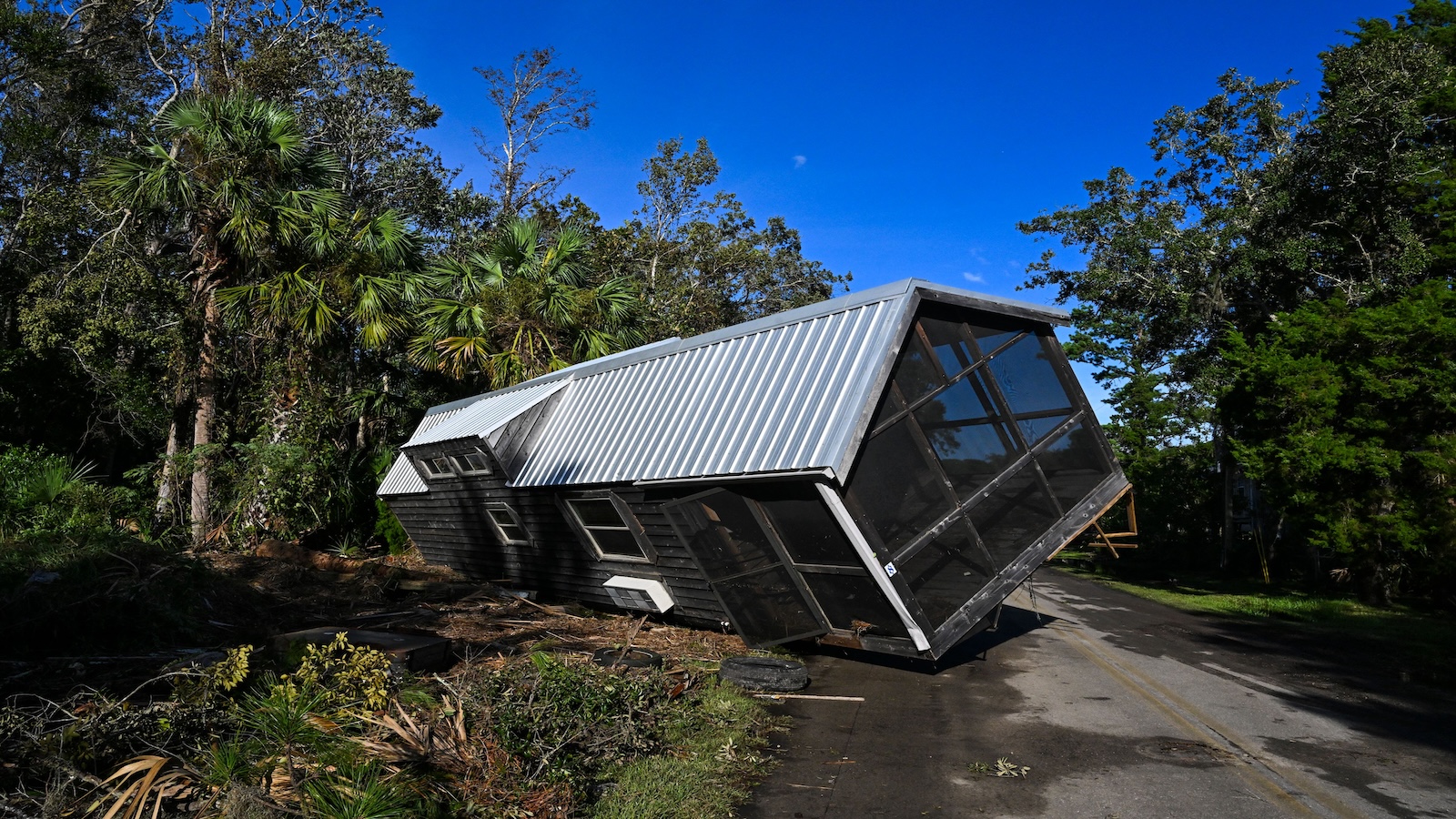
Cecilia Ortiz has worked as a passenger service agent at Phoenix Sky Harbor International Airport for the past two years. She usually has to walk 10 to 15 miles a day, up and down ramps, push heavy wheelchairs and carry passengers’ luggage. This summer temperatures have reached beyond 110 degrees Fahrenheit on the airport’s jet bridges, and yet she says she was denied breaks and water by her supervisors.
“I have heart failure myself, and it’s especially dangerous for me to work in extreme temperatures,” Ortiz said in a press briefing. “I don’t need to work in these conditions. Nobody should.” Accessible drinking water, a cool place to rest, breaks as needed, and training to understand the signs of heat exhaustion are what Ortiz considers a “very simple” way to make her workplace safer during burning temperatures.
Airport workers like Ortiz are joined this week by workers in the fast food, retail and farm sectors to demand heat protection on the job from employers and the federal government. From Atlanta to Los Angeles, a series of rallies, town halls and delegations are taking place in 13 cities as labor and coalitions escalate their demands on elected officials.
On Tuesday, service workers rallied at major airports in Charlotte and Phoenix. They called for immediate action from employers to ensure their safety in the workplace, including adequate breaks and access to drinking water during periods of extreme heat.
In Phoenix, where earlier this year local officials issued a heat ordinance workers and lawmakers who mandated many of these protections have raised alarm that the ordinance has led to insufficient improvements, and question how the protections are being applied. “Why are we still asking for the basics after passing an ordinance? Water. Breaks. It’s human rights,” said Phoenix City Councilwoman Betty Guardado at the rally. Later this week, laborers across the country will take a coordinated water break to signal the need for access to potable water at work.
As human-caused climate change continues to warm the planet, extreme heat is in the workplace becoming increasingly a deadly threat. Organizers say “Heat Week” is also spurred by the recent sudden death of Wednesday “Wendy” Johnson, a postal worker in North Carolinaand Ronald Silver II, a sanitation worker in Maryland. Both Johnson and Silver are believed to have died in part from heat exposure on the job, which kills dozens of workers every year.
Service Employees International Union President April Verrett, whose organization is one of the groups running Heat Week, said these deaths could have been prevented through safer working conditions, before calling on the Biden-Harris administration to strengthen, finalize and implement a federal heat rule. . “Dying on the job is simply out of the question, and it should never be part of anyone’s routine. Yet employers fail to act, thereby failing to protect workers’ lives and their health,” said Verrett.
“Heat is a silent killer. It’s the biggest weather-related killer in our community,” Representative Greg Casar, a Democrat from Texas, said in the briefing. “I was born and raised in Texas. We know it’s hot, but it’s never been this hot, this early, this long. So, as the climate crisis worsens, we must come together and take federal action at the national level and guarantee everyone the right to these rest and water breaks.”

Service Employees International Union
In July, the US Occupational and Health Safety Administration proposed a federal rule that would require employers to provide inside and outside workers with cool rest areas, drinking water and breaks once temperatures approach 80 degrees Fahrenheit. But that rule has not yet been finalized, and it still faces a likely tall review, additional reviews, potential legal challenges, and an upcoming presidential election that could derail the political will to get it done. Casar said elected officials at every level must do more to strengthen the urgent heat protection effort.
That’s especially important given that some policymakers are pursuing legislation that goes in the other direction, Casar noted — citing a law signed last summer by Governor Greg Abbott that banned Texas cities from providing local workers with heat shields. A similar law took effect in Florida this year. The proposed OSHA rule, he stressed, if passed, would “override laws like Governor Abbott’s that get rid of heat protection.”
“We could have these heat protections codified into federal law this month, if the Republican Speaker of the House would put it up for a vote … but we can’t hold our breath,” Casar said. (In fact, House Republicans did present expenditure accounts it would OSHA’s ability to enforce existing rules.)
The offices of Governor Abbott and Congressman Mike Johnson, the Republican speaker of the House of Representatives, did not respond to requests for comment.
Last week, Representative Ruben Gallego, a Democrat from Arizona, blasted the Biden administration for not doing enough to address the impact of extreme heat. In addition to advocating for an OSHA standard, Gallego has also proposed legislation that would add extreme heat to FEMA’s list of major disasters, The Hill. reported. “Once again, the administration is all talk, no action when it comes to extreme heat in Arizona,” Gallego said in a statement following a speech by US Secretary of Health and Human Services Xavier Becerra, who called extreme heat in Phoenix a “public health crisis.”
“When hurricanes or tornadoes hit, federal officials provide resources, but with heat, they only provide advice,” Gallego said. Others, such as Senator Alex Padilla — a Democrat from California — also pushed the administration to implement the proposed OSHA rule. “With climate change shattering heat records every summer, it has only become more critical to hold employers accountable for providing healthy heat stress protection,” Padilla told Grist. California is one of six states which established heat protection rules for outdoor workers.
In June, Shae Parker was working at a convenience store in Columbia, South Carolina, when she suffered from extreme heat exhaustion due to brutal temperatures and a lack of access to free water. “I had to leave work on a gurney. I was throwing up. I was sweating profusely, light-headed, nauseous. It was unbearable,” Parker said. “We only get one body … we want to go home to our families at the end of the day.”
Lourdes Cardenas, a farm worker in Fresno, California, also struggled with the effects of sweltering heat. This summer she endured multiple 110 degrees Fahrenheit days in the field; which, along with a lack of water, shade and not enough breaks, resulted in her experiencing dizziness and dehydration on numerous occasions. Despite the alarm to her supervisors, water is still not easily accessible, and she and her colleagues do not work anywhere near shaded areas. “The heat was really hard, and every year it gets worse,” Cardenas said in Spanish.
“We should have the right to have water, the right to have shade, the right to rest from the heat. But that is not the case,” she said. “I know that one job is not worth my life.”


